The Montessori community in Cincinnati and Northern Kentucky is growing, with great school on either side of the river, both private and public. That being said, sending your child to a Montessori school is not the only way to help them to grow and learn using Montessori methods. You can also utilize Montessori principles at home with your children. Montessori education is important to us at FFC, as one of our writers sends her children to a Montessori school, and another writer attended a Montessori school as a child. That is why we are excited to bring you a guest post from Heather Gerker, who works at Children, Inc. Heather is going to tell us about ways to instill the Montessori method in your home, and she also shares information about an upcoming event, a workshop called ‘Bringing Montessori Principles into your Home‘. If you have ever wondered about Montessori education, you are going to want to read this informative post. It left me inspired to create change in my own home.
Guest Post :: Montessori Principles at Home
by Heather Gerker
I often tell my husband he is a “Montessorian by default.” Almost 10 years ago, while completing my Montessori Teacher Certification Program (and pre-having kids), I began to realize the Montessori philosophy was not only something I’d “do for work” but it was going to be life changing for me. And it was. It has also clearly defined the way I (and my “Montessorian by default” husband) parent our 3 young children.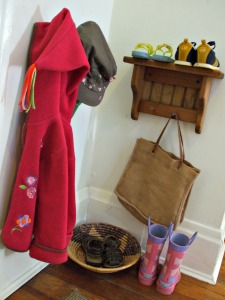
The Montessori Method encourages independence, a strong sense of self, curiosity and compassion in children. It nurtures a child’s natural eagerness to learn and encompasses the whole child – physical, social, emotional, and cognitive. Developed by Dr. Maria Montessori over 100 years ago, the method is being used world-wide in schools and many homes. While it is prevalent in the Greater Cincinnati area, many parents still wonder how to bring Montessori principles into their homes. I find it’s often easiest to start with a few of the core tenants of the Method:
1. Respect. Often parents feel that implementing Montessori principles at home will be costly. However, many of the core tenants of the philosophy can be practiced immediately and without any money spent. The first of these is respect. Maria Montessori believed that all children should be treated with respect, “as capable beings,” not just little adults. In Montessori environments, respect is found in every aspect: through respect of the environment, the materials, the World, themselves, and others.
Respecting children in our home may look like this:
- Including your child with family decisions. It can be as simple as “what should we do today?” or as complicated as “where should we vacation?” It is very empowering for a child to make meaningful contributions to the family.
- Listening to your child. When we ask our children questions, do we wait for the answers? Do we really listen?
- Allow your child to concentrate; while building puzzles, putting on shoes, or doing artwork. This has always been the most challenging for me, as a teacher and even more so as a mom. We are always so tempted to look over our child’s shoulder and say, “Look at that flower you are drawing!” but what we don’t realize is that this is interrupting the child.
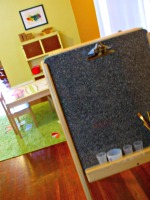
- Modeling behavior. How many times have you heard your child repeat something you said recently? It happens to me every day. Modeling respectful behavior for children is one of the best ways a child learns and understands it.
2. Freedom. I was working in a Montessori school in Freeport, Maine several years ago. One day, a little boy in my classroom was being picked up by his Grandpa. His Grandpa was still unsure of the Montessori philosophy and would often tell me this. On this day, Grandpa arrived and asked the little boy, “What did you do today?” To which the little boy responded, “I got to do whatever I wanted as long as I didn’t hurt anyone!” Grandpa smiled slightly, looked over at me and said, “Sounds like a Montessori classroom to me.”
Freedom in a Montessori environment is often misconstrued by those who don’t fully know the method. Yes, the little boy “got to do whatever he wanted” but it is within responsibility. In a Montessori environment, children are encouraged to think independently and act as a member of a community. Freedom in Montessori environments include freedom of movement, freedom of exploration, freedom to interact socially, and freedom from interference from others. This is achieved, within clearly defined boundaries, allowing the child to make choices in a prepared environment. And ultimately leads to independence and a strong sense of self.
3. Prepared environment. This is the one tenant of the Montessori philosophy that can be the most challenging to implement, at least at the beginning of bringing Montessori principles into your home. A prepared environment is designed so the child has the maximum ability for independence and exploration. It is well thought out and designed with the child in mind. It is orderly, clean and includes natural, realistic materials. We create the prepared environment and choose toys or materials for the child based on what we have observed the child showing an interest in.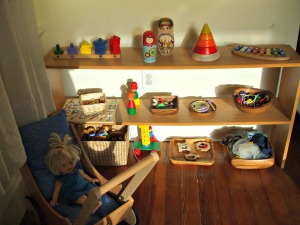
A prepared environment in your home may look like this:
- Instead of a toy box in a toy room, provide a low shelf in the living room. This allows the child to play while being a part of the family.
- Child sized furniture, child level coat racks, and other opportunities for the child to be independent.
- Toys and/or materials that are rotated according to what the child is currently interested in. My children seem to think we have a toy store in our basement since often their toys and materials will be stored there while a new rotation of materials is on the shelf.
Bringing Montessori principles into your home isn’t easy. It can be a major shift for some and for others, only small changes are needed. The important thing to remember is that the work put in at the beginning will not only benefit your children but also the entire family.
After seeing our oldest (who will be entering first grade in the fall) blossom into a confident, independent young lady with a very strong love of learning, my husband is grateful of his “Montessori by default” status.’
Register for the Bringing Montessori Principles into your Home workshop:
What is the Montessori Philosophy? What makes a home Montessori? And how can I use Montessori principles in my home? In this 3 hour workshop, we will discuss ways to create a home environment that will help your child develop independence and a strong sense of self. An overview of the Montessori Philosophy will also be discussed. Focus will primarily be on ages 0 – 6. Participants will receive a Resource Folder and will have the option to join an online Montessori Parenting Support Group.
More info here: http://www.cincinnatimontessorisociety.org/wp-content/uploads/2014/04/MontessoriAtHomeRegistration.pdf
More Montessori Resources:
Find a Montessori School for your Family in Cincinnati or Northern Kentucky
Montessori Education Week – Feb. 21- March 1
Cincinnati Montessori Society Parent Resources
Heather Gerker, M.Ed., is the Program Director for the Greater Cincinnati Center for Montessori Education, a division of Children, Inc. Heather is the President of the Cincinnati Montessori Society (CMS) and Co-Chair of the CMS Annual Montessori Conference. Heather has 3 young children, Madelyn, 5 years old and twins, Henry and Clara who are soon to be 3 years old.
**Photos provided by Heather Gerker


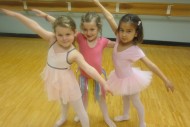

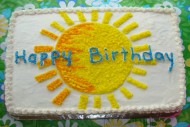

My favorite circus act is the tight rope walkers!